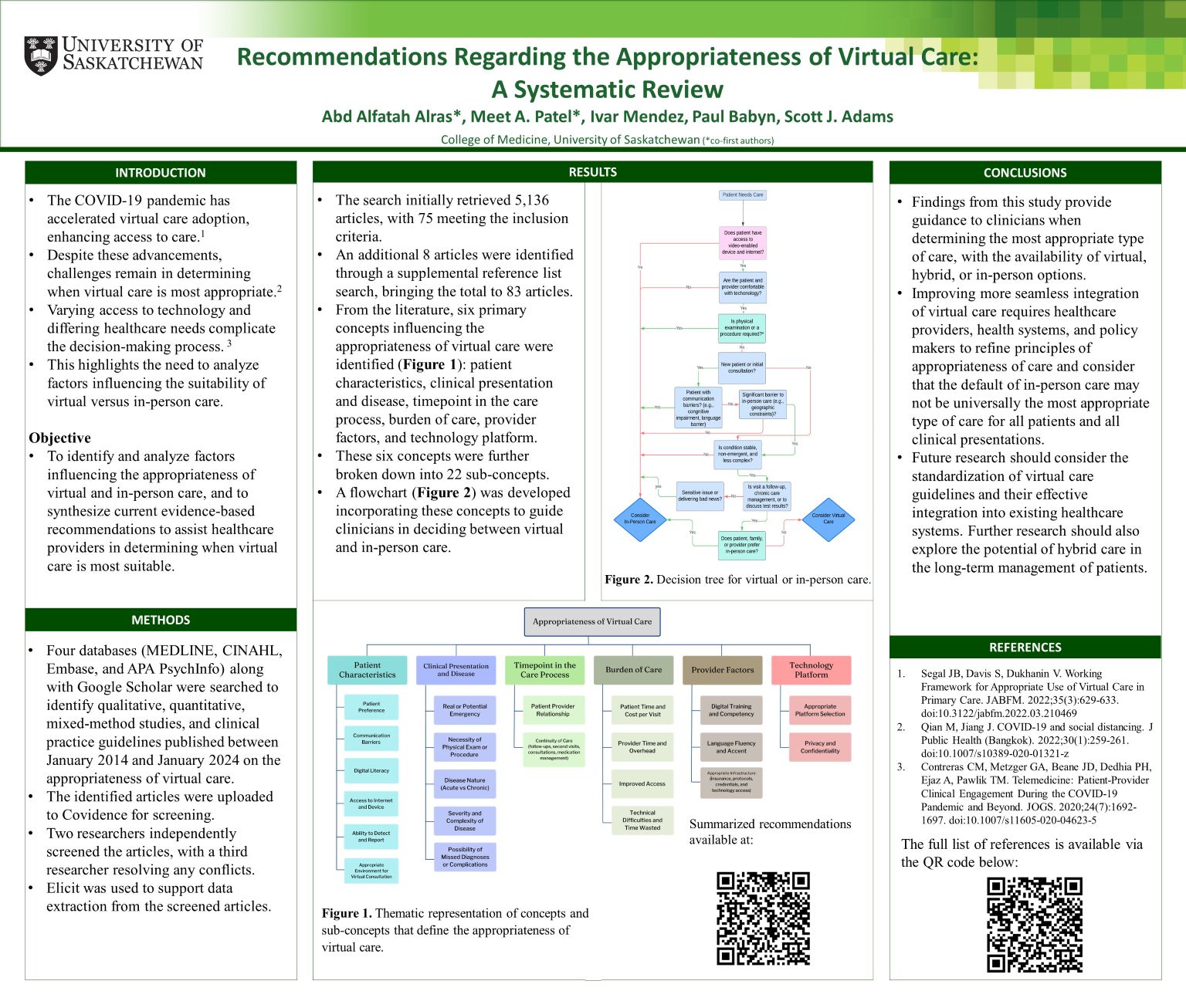
Recommendations Regarding the Appropriateness of Virtual Care
Abd Alfatah Alras
Introduction: The COVID-19 pandemic accelerated virtual care adoption, improving patient care quality and efficiency. However, determining when virtual care is appropriate remains challenging, as varying access to technology and differing healthcare needs complicate the decision-making process. This highlights the importance of analyzing factors influencing the suitability of virtual versus in-person care.
Methods: Four databases (MEDLINE, CINAHL, Embase, APA PsychInfo) and Google Scholar were searched for studies and guidelines on virtual care appropriateness from January 2014 to January 2024. Two researchers independently screened 5136 articles, with 75 included after review. Eight additional articles were identified through reference lists, totaling 83. Data extraction was supported by the Elicit platform.
Results: Six primary concepts (patient characteristics, clinical presentation, care process timepoint, burden of care, provider factors, and technology platform) and 22 sub-concepts influencing virtual care appropriateness were identified. A decision tree incorporating these concepts was developed to guide clinical practice.
Conclusion: Determining virtual care appropriateness can be complex. This review provides a decision-making framework that can aid clinicians, with future research needed to refine virtual care guidelines and explore hybrid care models for optimal healthcare delivery.
